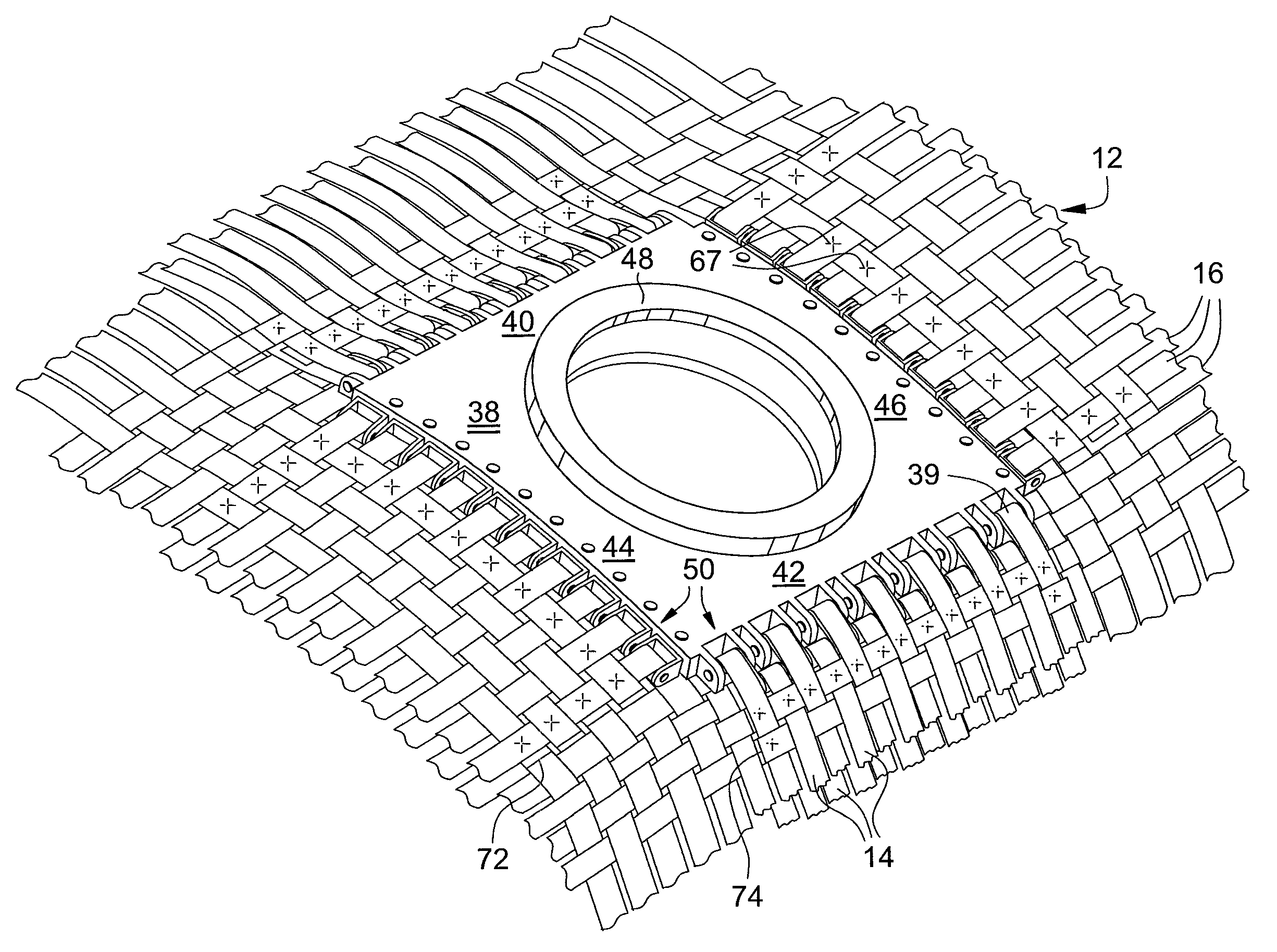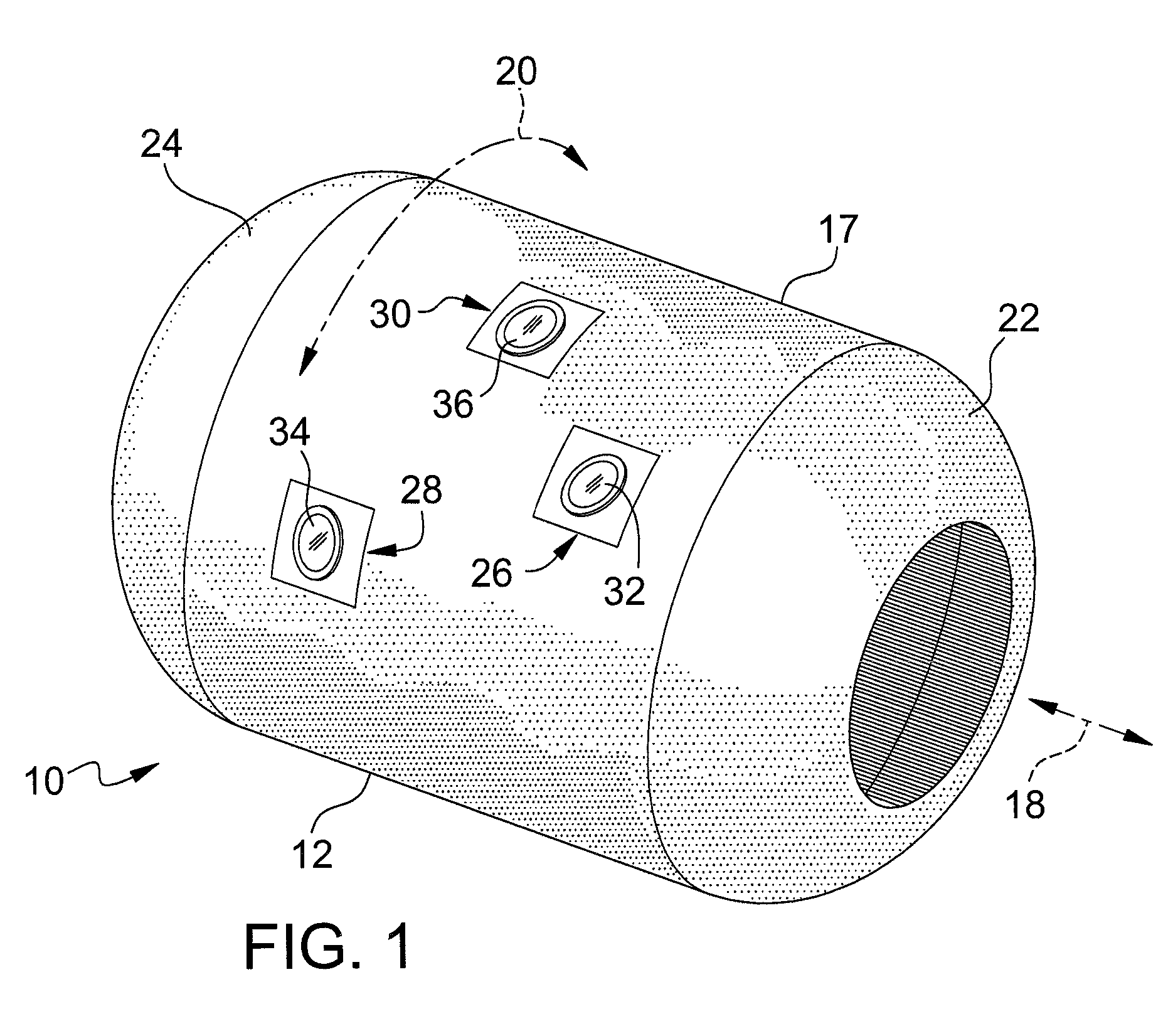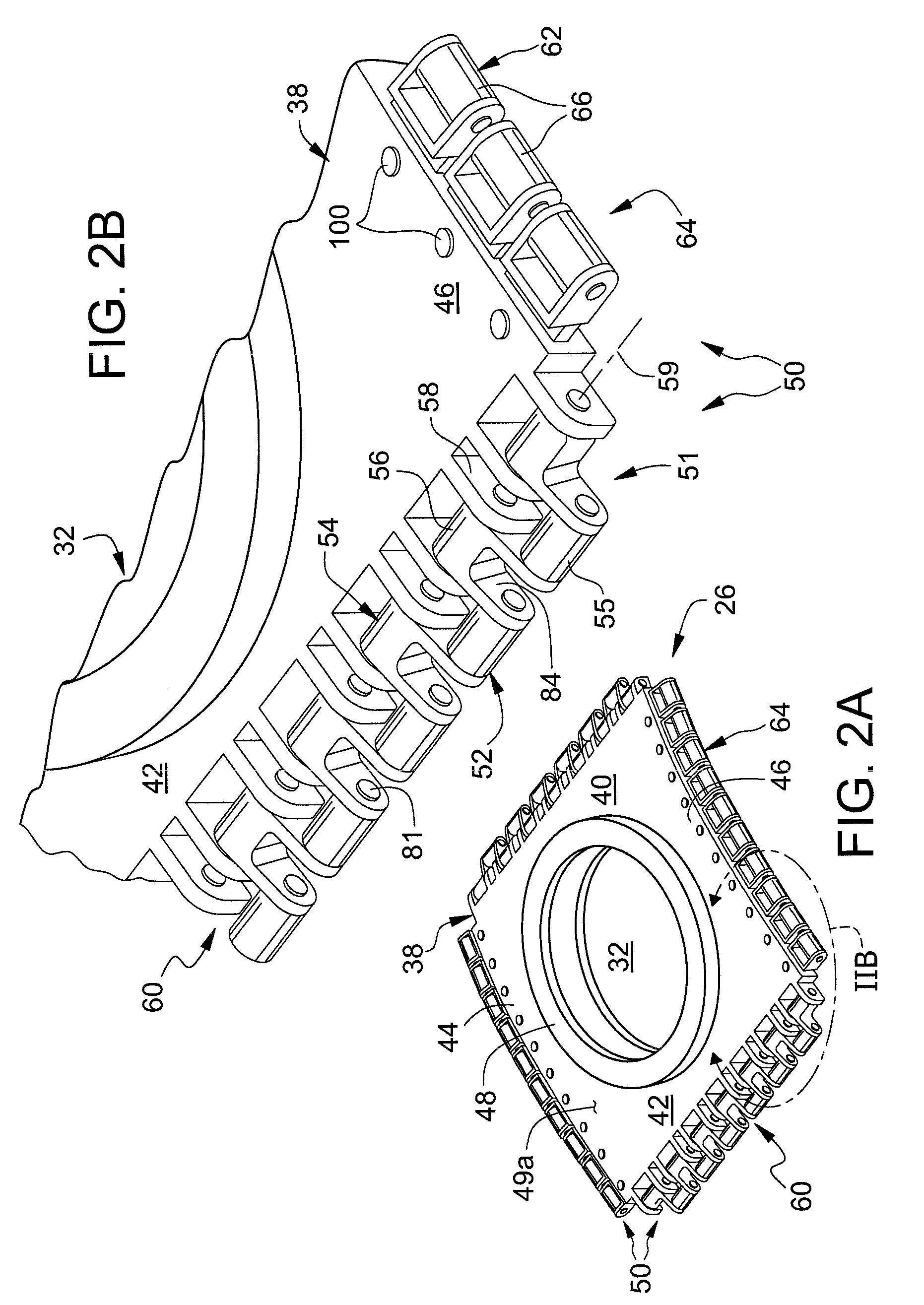Apparatus for integrating a rigid structure into a flexible wall of an inflatable structure
a technology of rigid structure and inflatable structure, which is applied in the direction of cosmonautic vehicles, transportation and packaging, lighter-than-air aircraft, etc., can solve the problems of limited size and configuration of rigid structure, unique challenges for designers, and complications with certain design features
- Summary
- Abstract
- Description
- Claims
- Application Information
AI Technical Summary
Problems solved by technology
Method used
Image
Examples
first embodiment
[0083]As disclosed, means are provided for reducing potentially damaging, differential stresses on the respective flexible straps, for ensuring that such forces are evenly distributed, and for accommodating the differing reactions to stress of the rigid and flexible components. For example, such differential stresses are accommodated by the use of connecting mechanisms particularly adapted for connecting the mutually parallel circumferential and mutually parallel longitudinal webbing straps to one or more rigid panel members, such as window frames, such that tensional loads are equally distributed thereon; such that the loads are parallel to the major axes of the panel; and such that bending moments on elements on the panel are reduced. Non-axial stress on the connecting mechanisms, such as the lever effect that could be associated with elongated members supporting roller-bearing devises as previously discussed, are reduced, particularly with respect to the first embodiment incorpor...
second embodiment
[0085]As will now be understood, the circumferential straps 14 may be positioned in mutually adjacent, mutually contiguous alignment rather than mutually spaced alignment because the staggered array 60 of connecting mechanisms 52, 54, and, in the second embodiment, the staggered array 160 of connecting mechanisms 152 and 154 permit closer spacing of the straps 14. As noted above, this is because the inner connecting mechanisms are positioned behind the outer connecting mechanisms and may therefore extend laterally on either side of the outer connecting mechanisms, permitting their respective rollers to be spaced closer together along the frame end portions 40, 42.
[0086]As discussed in previous sections, tension applied along straps extending circumferentially around the cylindrical, longitudinally extending inflatable module body is normally greater than that applied along straps extending longitudinally, along the length of the elongated body. Accordingly, in some applications, if ...
PUM
 Login to View More
Login to View More Abstract
Description
Claims
Application Information
 Login to View More
Login to View More - R&D
- Intellectual Property
- Life Sciences
- Materials
- Tech Scout
- Unparalleled Data Quality
- Higher Quality Content
- 60% Fewer Hallucinations
Browse by: Latest US Patents, China's latest patents, Technical Efficacy Thesaurus, Application Domain, Technology Topic, Popular Technical Reports.
© 2025 PatSnap. All rights reserved.Legal|Privacy policy|Modern Slavery Act Transparency Statement|Sitemap|About US| Contact US: help@patsnap.com



